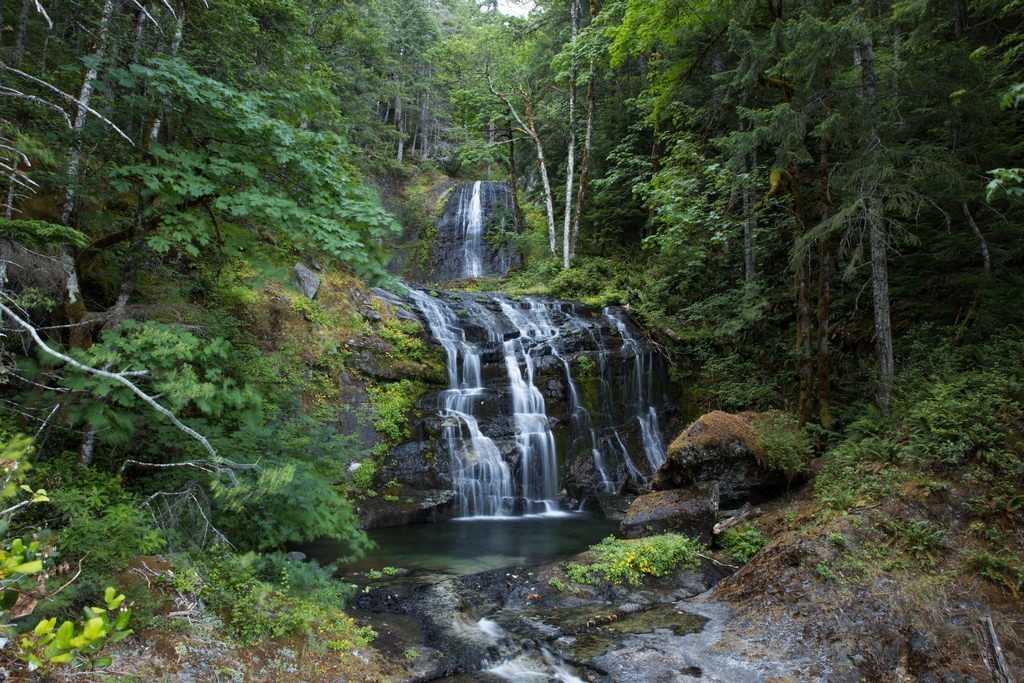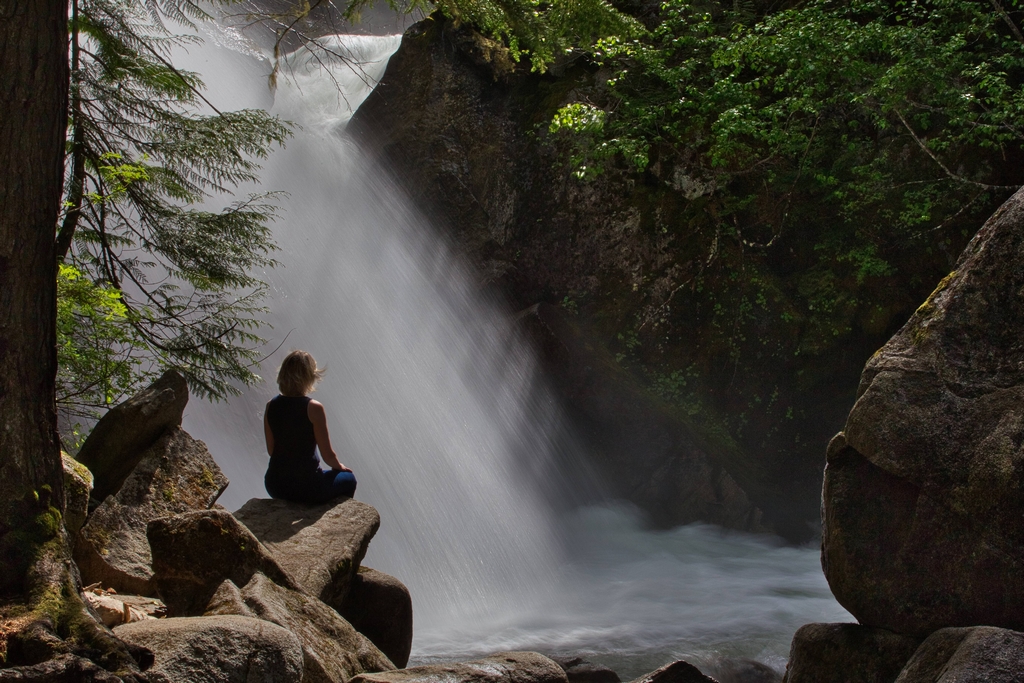The Hidden Wonder of Abiqua Creek


Time spent in the company of natural waters can become an obsession, and those experiences can fuel the creative spirit with inspiration and endless “design” ideas. Here Eric Herman recalls a day trip to a place in Oregon that stands as a perfect example of the serendipity of days devoed to seeking hidden wonders.
By Eric Herman
The beauty of natural waters comes in many forms. Each place is always a little different with its own features, history and characteristics. Finding these places and imbibing in their beauty is, I believe, a worthy pursuit for all people, and especially so for those who make their living creating aquatic environments.
Many watershapers I know often say that studying natural bodies of water not only stokes the spirit and rewards journeys – long and short, big and small, nearby or far away – it also fuels the creative process when designing for their clients. After all, nature is the ultimate “design” laboratory.
Long before I was a writer covering all things aquatic, I’d taken many excursions seeking the water’s edge. For as many times as I’ve been in aquatic spaces, and having lived in the midst of oceans, lakes and rivers, much of my life, every visit is different. Each carries unique character and combinations of features that are constantly changing with the seasons and the ebb and flow of natural processes.
Water literally shapes the landscape in an everlasting and ever-transforming tapestry of life, earth, liquid and sky. Seeking those moments in those places is, I believe, one of the greatest joys of being alive.
AN OREGON TRAIL
Here’s just one small example, a place I experienced while living and traveling the great Pacific Northwest. I had read about an exquisite feature in an online publication called The Mossy Log, a resource for people who love the forested environs of Oregon and Washington, and I decided to make the trip to the western forests of Oregon’s Cascade Range to experience Abiqua Creek and the falls of the same name.

These days when I see places like this, I often muse to myself that it is not humanely possible to replicate such almost overwhelming beauty in a man-made space. I’m also always thrilled to know that such places exist on this planet, and if even for a short time, I have the pleasure of being there.
Having read the description and seeing the photos, I was reasonably certain this would be one of those experiences. Truth be told, in all my decades of travels, this relatively unknown place would capture my heart almost as much as any other.
Writing for The Mossy Log in 2017, Shawn Bolker said: “Beautiful at any flow — stunning in full throat, Abiqua Falls is a place of wonder. No words can describe the glorious scene that unfolds as one enters the falls’ majestic basalt amphitheater. Abiqua Creek pours in picture-perfect fashion, plunging nearly 100 feet into an expansive pool. Not only are the falls stunning – the surroundings are overwhelming. Abiqua Falls displays some of the most striking and unique columnar basalt formations in Oregon. Diverse species of lichen and mosses grow on these cliffs, adding colorful textures to the scene.”
That does fairly well sum it up. Bolker also pointed out that getting there is not easy. The journey involves a long bumpy ride on what was at the time I was there, a very poorly maintained dirt road and then a mile-plus hike to the official trail head. From there, it’s only about a quarter mile from the creek.
BREATHING IN BEAUTY
Once there, it’s easy to forget about the hassle. It’s truly a feast for the senses. Dramatic basalt formations are everywhere, draped in the greenery of the forest understory of wild blackberry vines and ferns. Numerous species of evergreen and deciduous trees, many covered in moss, rise above, enveloping you with endless layers of variegated greenery.
And, of course, there is the water. The flow was vigorous when I was there, as the complex crystal blue waters course through the rocky landscape. Along the creek you find cascades, emerald pools, and endless examples of how water and earth grapple and conspire to scenes of bold and subtle beauty and support a thriving riparian ecosystem.
As is true of most everywhere on the earth’s surface, this amazing place is the result of ions of dynamic geological history. According to Bolker: “The striking basalt formations seen along the creek and at the falls are all part of the Columbia River Basalt Group, a series of lava flows that erupted from fissures almost 17 million years ago.
The lava flows comprise a large igneous province of basaltic rock that stretches throughout much of eastern Oregon, eastern Washington and western Idaho. Abiqua Falls itself lies on the Scotts Mills Formation, a thick sequence of volcaniclastic sediments. The falls lies on the Abiqua Member — the middle layer of this formation. The basalt columns and joints around the falls formed when the rock contracted as it cooled. The fracture pattern that forms at the cooling surface tends to run down the lava as it cools, forming geometric columns.”
The creek is a tributary of the Pudding River in Oregon’s Willamette Valley. As mentioned above, this is the kind of place that students of natural design can use as a complex model. The dramatic falls and the pool they flow into looks like it was “designed” to function like a resort swimming pool where you feel like you’ve entered a different world.

The space is like a massive amphitheater with falls as the permanent attraction. I spent about two hours there, lounging and swimming, and mostly just allowing myself to be mesmerized by the exquisite surroundings. The sound of moving water is everywhere, playing a symphony of liquid notes and rhythms. The sunlight plays along as it creates fractured patterns of light filtering through the trees and glinting in the jewel like water.
UPON ARRIVAL
After the long hike, I was more than ready to take a dip into the inviting water and I counted about a dozen other people there lingering on the gravel beach.
Most of the people there had packed in supplies for picnicking, and partying, as the aroma of cannabis and the sound of laughter and happy conversations wafted through the air. Everywhere along the trail and at the pool, I was in the company of others visibly enraptured by the beauty.
One particularly smitten hiker remarked how the place looked like his mental image of the Garden of Eden. Although a rather hyperbolic observation, I can certainly see how someone would feel that way. This is a place that does very much fit the definition of a paradise.
The only negative, which is unfortunately common throughout much of the PNW, clear cut logging has scarred many of the nearby slopes, serving as a constant reminder of the kind of environmental devastation unchecked human activity can inflict on the land. When by the falls, and most areas along the creek, those insults are unseen, even though you always know they’re not far away.
This is one of hundreds of places I’ve been in search of natural wonderment. Those forays are among my most cherished memories, and I look forward to visiting many more.
In my registry of destinations that have left a beautiful impression, Abiqua Creek is very high on the list.
Opening photo by Michal Balada | Shutterstock, lower photo by Wanderlust Studios | Shutterstock, last photo by Ryan Felt | Shutterstock









